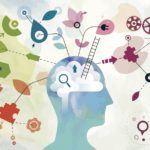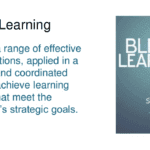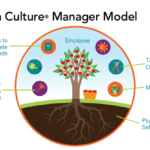What Does A Culture of Learning Look Like?

You’ll find a lot of publications out there that talk about what a culture of learning is. Josh Bersin states that it is “The collective set of organizational values, conventions, processes and practices that influence and encourage both individuals and the collective organization to continuously increase knowledge, competence, and performance.”
The Corporate Executive Board defines it as “A culture that supports an open mindset, an independent quest for knowledge and shared learning directed toward the mission and goals of the organization.”
What’s clear in all definitions is that a learning culture goes far beyond the workshops and training programs hosted by the learning team. Those offerings are certainly a big part of the picture, but the real culture of learning lives in the beliefs and attitudes of its people. Namely, they are around two key questions:
- How do we help people learn, grow, and improve?
- What do we do when people make a mistake or fail?
Failure Is Necessary
The truth is that learning and failing are inherently linked—you cannot have a positive and vibrant learning culture if you do not also have a culture that is safe for taking risks and making mistakes. Period.
Harvard Professor Dr. Amy Edmondson has coined the term psychological safety and found that it is the key differentiator for creating high-performing teams. She defines psychological safety as ‘‘a belief that one will not be punished or humiliated for speaking up with ideas, questions, concerns, or mistakes.”
There are lost opportunities to learn and grow when individuals are terrified of failure. Hostile work environments can negatively affect team productivity when members do not feel comfortable sharing or challenging ideas.
Both learning and failing are crucial.
Truth of Risk-Taking
Let’s take a deeper look at your current culture of learning by asking some questions:
- Do people admit when they don't know something or ask for help?
- What happens when someone makes a mistake or fails? Are they teased and shamed or encouraged to look at what happened and try again? When people make mistakes or challenge ideas, do they ultimately get sidelined, demoted, or fired?
- Do people admit their mistakes and take responsibility for fixing them or do they blame others?
- Do managers and leaders share stories of how they took risks or recovered from a failure?
As you can see, this aspect of your culture is crucial. All of the amazing training programs in the world won’t help if people don’t feel safe enough to stretch and grow.
A metaphor that I find useful is that of a tree. For a tree to thrive and grow to its fullest potential, it needs to be rooted in soil, and the quality of that soil determines what we see above the surface.
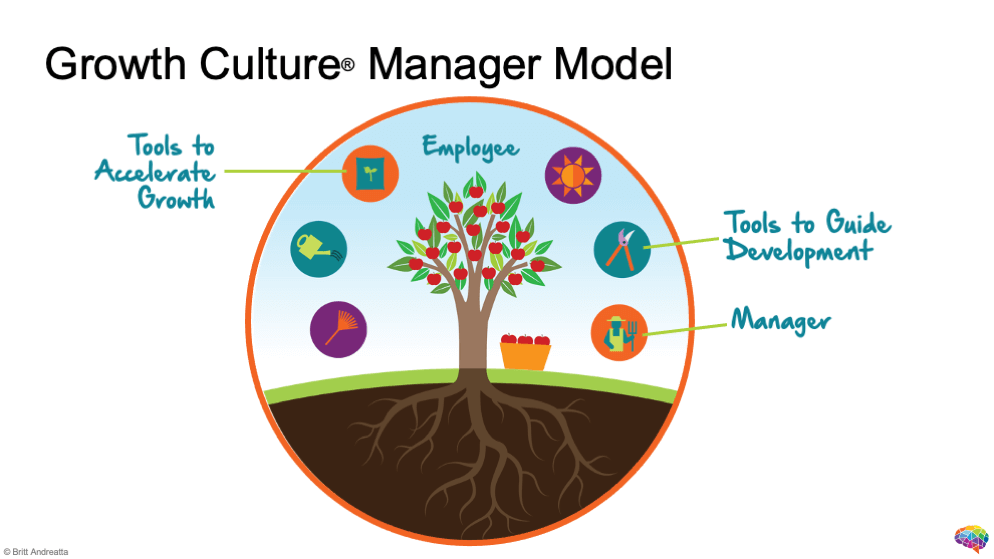
Above Ground Elements
The soil represents how people are treated when they take risks and make mistakes. It’s the very foundation in which the success of your organization is rooted. To grow a healthy tree, you must start with good soil. If it’s sitting in toxic soil, it will never reach its full potential, no matter how much sunlight and water it receives.
Then you add things that nurture and accelerate growth like fertilizer, deep root watering, and pest control. All of these things happen “above ground” and are the elements that most people think of when they talk about a culture of learning—things like training events, leadership development programs, and online learning resources. Those are all certainly important but it’s more than just the programs. Consider these questions:
- Do managers and leaders role model a commitment to their learning and improvement?
- Are there learning programs available for every level of employee, from new hires to top executives?
- Is time for learning encouraged or seen as in addition to the “real” work?
- When people show progress or improvement, is it recognized and rewarded?
In the middle, you have the tree itself or an individual employee. They bring their mindset, current skills, and past experiences. The unique capabilities each employee bears will wither if not fostered by a nourishing environment. Here are some questions to ask:
- What career stage are people in?
- What skill levels do they currently have, and what do they want to develop or hone?
- Do they hold a fixed or growth mindset?
- What past experiences have they had with toxic environments and learning opportunities?
Together, all 3 pieces create the real culture of learning.
The Power of the Growth Mindset
One cornerstone of a positive culture of learning is empowering a growth mindset. The term was coined by Stanford psychologist Dr. Carol Dweck, who studied what differentiated people who succeed from those who fail. It came down to whether they hold a fixed or growth mindset, which is a belief about themselves and their abilities.
According to Dweck, people with a fixed mindset believe their traits or characteristics—such as their intelligence or people skills—are set once they reach adulthood.
Fixed vs. Growth Mindset
A person with a fixed mindset thinks, I’ve got what I’ve got and just have to make the most of it, but I can’t change it. In contrast, a person with a growth mindset believes that they can always get better, that they can always learn something new, or practice something more. They also believe that practice and effort are the pathways to improvement and even mastery.
A person with a growth mindset thinks I may not be able to do this yet, but I can work hard and get better. "The word “yet” is the hallmark of the growth mindset. Dr. Dweck says it best when she states, “Individuals who believe their talents can be developed (through hard work, good strategies, and input from others) have a growth mindset. They tend to achieve more than those with a fixed mindset (those who believe their talents are innate gifts).”
At work, these different mindsets play out every day and influence how people view effort, setbacks, challenges, feedback, and even the success of others.
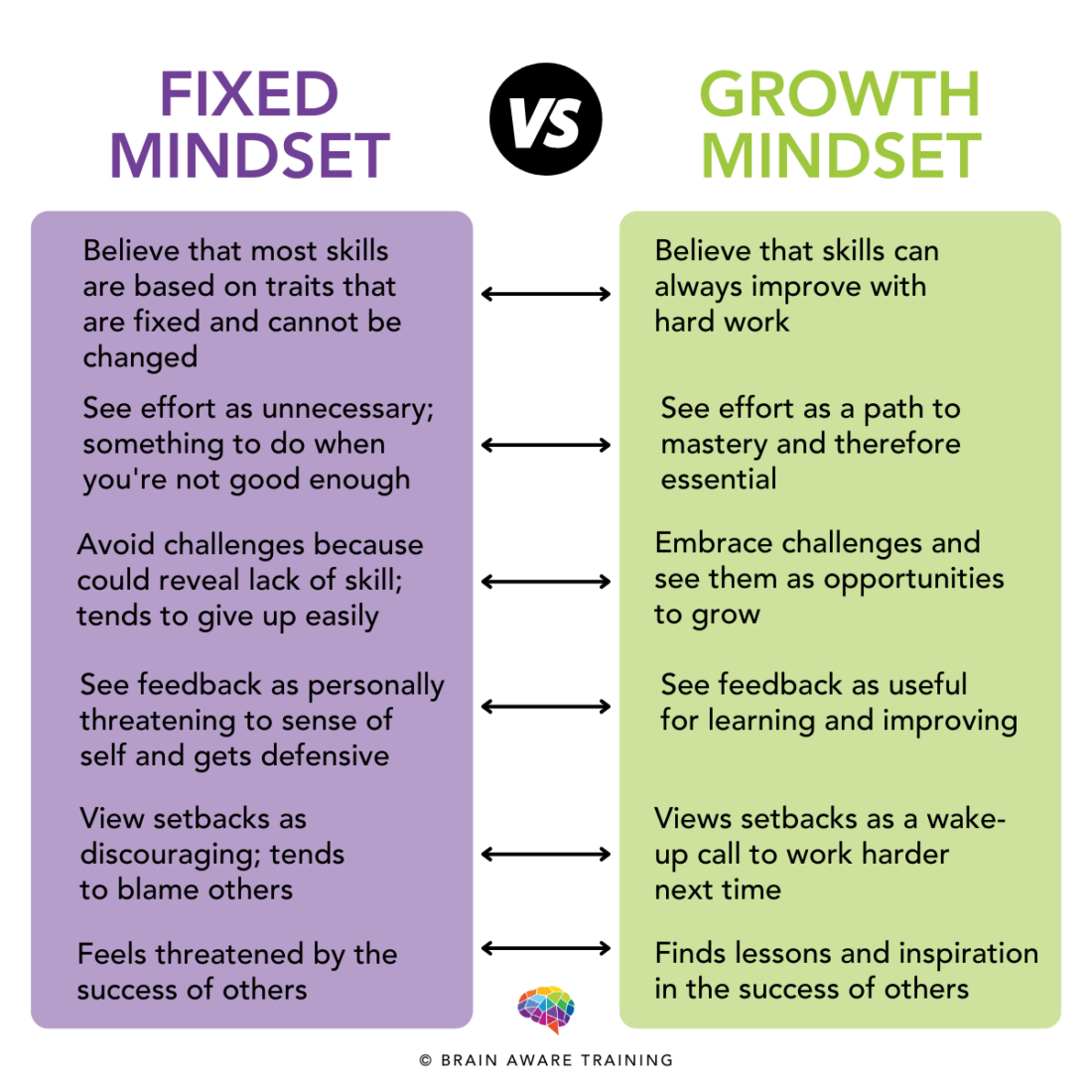
People with a fixed mindset don’t believe they can improve, so they tend to focus on doing what they are already good at, avoiding challenges, and blaming others when they have a setback. They also tend to be very defensive when they receive feedback.
People with growth mindsets are always looking for opportunities to learn and grow. They put in the time and energy it takes to get better at something they welcome challenges and see setbacks as wake-up calls. They not only respond well to feedback, they actively seek it out.
These two mindsets create very different career paths with the growth of people more likely to improve over time, develop more sophisticated skills, and adapt to our rapidly changing world.
When people with growth mindsets achieve ever-higher potential and performance levels, the organizations they work for reap the benefits. Their quest for continuous improvement helps their organization succeed. For example, Satya Nadella, CEO of Microsoft, intentionally drives the growth mindset throughout his global organization.
A great learning culture will support and empower the growth mindset folks to continually learn and grow. But even more importantly, it will help the fixed mindset folks to change their belief about themselves, turning on the potential of your entire workforce.
4 Steps to Shift Your Mindset:
Neuroscience proves that the truth of our brains is growth – we can and do create new neural pathways our entire lives. It’s called neuroplasticity and the studies are conclusive – you really can teach an old dog a new trick, even if he doesn’t believe it... yet.
There are four key ways to shift the mindset of your people from fixed to growth.
- Expose them to information about mindset and neuroplasticity. There are many ways to weave these concepts into your learning events, your performance review process, and your leadership development programs. I do this all the time and you’d be surprised how much just explaining these concepts can quickly shift people’s understanding of their mindset.
- Create an environment that is safe for taking risks and making mistakes. Most fixed mindset folks are anxious about making mistakes so to overcome their natural hesitation, you have to intentionally create an environment where mistakes are valued for the vital role they play in growing and improving.Google’s global research found that psychological safety was the key differentiator when exploring what set their highest-performing teams apart from the others in their global workforce. They now make building psych safety a core component of their learning programs and culture.
- Making learning a normal and valued activity. Make more visible the learning and growth that is already occurring across your organization, showing examples from top leaders to those at the frontlines.
- Acknowledge and reward progress and improvement. Study after study shows that when people are told that improvement matters, they improve. When progress is acknowledged, they push for more progress.
The Benefits of Creating A Culture of Learning
Why would you want to create a positive culture of learning? There are many impressive benefits and whether you know it or not, your organization has a learning culture. Study after study has shown that a positive culture of learning drives all kinds of business metrics that matter. Let’s look at some of them.
Increased employee performance and productivity in achieving business outcomes. According to a study by Bersin & Associates, there is a direct and positive correlation between learning culture and performance. Learning culture accounts for 46% of overall improved business outcomes. This includes higher levels of innovation, faster time to market, and greater market share.
The Association for Talent Development (ATD) conducted research that discovered that top-performing organizations are 5 times more likely to have a learning culture than lower-performing ones.
Higher levels of employee engagement. According to a study by Gallup, approximately 17.2% of US employees -- and 24% of global employees -- are actively disengaged. And their disengagement costs their organizations approximately 34% of their annual salary. McLean & Company found that one of the primary drivers of engagement is opportunities to learn. In addition, they discovered that for every 10% improvement in learning effectiveness, employee engagement increased by nearly 4%.
Enhanced ability to compete for and retain top talent. Competition for top talent is strong so the ability to grow and develop your current employees is a distinct competitive advantage. ATD found that high-performing organizations are 3 times more likely to use their learning culture in recruiting new talent. Data from Glassdoor indicates that “the ability to learn and progress” is one of the biggest differentiators for Millennials when choosing a workplace. 42% of Millennials say they will likely leave their organization because they are not learning fast enough.
Enhanced ability to effectively adapt to change. According to Deloitte’s Human Capital Trends Report, 90% of all CEOs believe their company faces disruptive change. 70% say their organization does not currently have the skills to adapt. Yikes! That same study found that executives see learning as the primary driver of employee development. 84% view learning as important (40%) or very important (44%).
Better customer satisfaction as well as responsiveness to customer needs. Bersin & Associates found that organizations with high-impact learning cultures had a distinct customer advantage because they have 30% higher ratings in both customer satisfaction and customer responsiveness, placing them in the 90th percentile compared to the 60th.
Given all this, it’s surprising that only about 30% of organizations have a culture of learning but developing one is quickly becoming a top priority for leaders across all sectors and around the world.
How to Develop a Culture of Learning
As you consider how to develop your own culture of learning, focus on developing these top 5 characteristics, which studies show are essential:
- Learning strategies are closely aligned with the organization’s strategic goals and outcomes
- The organization’s values specifically refer to the importance of learning and development
- The learning function is staffed by qualified learning professionals who know how to create real behavior change
- Learning is an integral component of the organization's talent management ecosystem
- Learning is delivered where and when it is needed, creating a cohesive landscape of accessible opportunities
Of course, none of these can happen if people are afraid to take risks or make mistakes. When we look at all the potential benefits you can reap, it’s clear that every dollar invested in creating a positive culture of learning will pay for itself many times over.
How Managers and Leaders Build the Culture of Learning
Another critical component for building a positive culture of learning is the role of your managers and leaders. This is because the real, daily experience of any organization lives in the environment that managers create for their employees -- and that leaders create for the departments and teams.
The Role of Managers
Let’s first look at managers. We have all heard the adage “People leave a boss, not a company.” It’s true. Numerous surveys have shown that the #1 reason people give is the relationship with their manager. I’m sure you’ve had a range of bosses in your career too. The good ones help us be our best and make us feel great about coming to work. On the other hand, the bad ones eventually make us realize that we would be better off somewhere else.
When you look deeper, it comes down to whether the manager is creating a positive learning culture. It’s the manager’s daily words and actions that are the soil from which the tree can thrive or wither. While other parts of the organization can compensate a little for a poor manager, nothing has as direct of an impact on an employee’s ability to thrive and grow.
The Power of Manager Training
When I look at how manager training is offered in most organizations, it’s often missing these critical elements. Hearing about good coaching is not the same as actually coaching someone. Talking about what facilitates team collaboration is not the same as doing those behaviors in a realistic simulation.
We must ensure that learning events include practice so that we can help people develop the right habits and build their skills to the right levels. The truth is that managers need to develop mastery in these core skills or else their employees won’t be able to thrive.
Leaders and Executives Need to Lead with a Growth Mindset
Now let’s look at your top leaders and executives. I think the healthiest and most vibrant organizations have leaders who have a growth mindset and believe in the power of learning. They talk about their own mistakes, insights they’ve gained, and their quest for improvement.
They also advocate for learning. They empower a leader of learning and give that person the same status as HR, creating a team of talented equals. They not only promote learning but they participate in it. This might include kicking off a key program as well as authentically attending some events as an eager learner. The key here is humility – the best leaders never assume that because they sit at the top of the organization, they have nothing left to learn. The best leaders are the hungriest learners.
Leaders Evaluate and Hold Managers Accountable for the Health of Their Teams
All of the above efforts fall flat if managers are not evaluated and rewarded based on the health of their teams. High-performing organizations don’t turn a blind eye to the damage caused by poor managers.
Let me be clear…
- When there is high turnover on a team, something is wrong.
- When teams stumble and underperform, something needs attention.
- When there is high absenteeism, illness, and complaints to HR levels, you have a crisis.
Just like with trees, employees will show you the quality of the soil they sit in. If you ignore it and allow poor managers to stay in those roles, you will undermine all attempts to create a positive learning culture.
Organizations that invest in effective manager training and hold their managers accountable, reap amazing rewards in the form of competitive advantage, employee engagement, and customer loyalty.
Related Blogs
JOIN OUR COMMUNITY
Be the first to know of Dr. Britt Andreatta's latest news and research.

